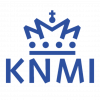ESA’s Wind Lidar Mission Aeolus, Data Quality and Scientific Exploitation after 2.5 Years in Flight
The European Space Agency (ESA) wind mission, Aeolus, hosts the first space-based Doppler Wind Lidar (DWL) world-wide. The primary mission objective is to demonstrate the DWL technique for measuring wind profiles from space, intended for assimilation in Numerical Weather Prediction (NWP) models. The wind observations are used to advance atmospheric dynamics research and for evaluation of climate models. Mission spin-off products are profiles of cloud and aerosol optical properties.
Aeolus was launched on 22 August 2018, and the Atmospheric LAser Doppler INstrument (Aladin) switch-on was completed with first high-energy output in wind mode on 4 September 2018. The on-ground data processing facility worked excellent, allowing L2 product output in Near-Real-Time (NRT) from the start of the mission. First results from the wind profile product (L2B) assessment using data from October 2018 showed that the winds were of good quality, despite of varying L2B wind biases and random errors in the free Troposphere within (cloud/aerosol backscatter winds: 2.1 m/s) and above (molecular backscatter winds: 4.3 m/s) the requirements (2.5 m/s). However, after applying bias correction the observations allowed significant positive impact in first preliminary NWP impact experiments by several NWP centers in Europe, USA and Canada.
During commissioning phase and early operation, a number of anomalies were discovered: lower than specified atmospheric and ground return signal (probably caused by signal clipping in the instrument receive path), instrument slow output energy decrease and alignment drifts, wind bias variations during the orbit and from orbit to orbit due to imperfect telescope temperature control, elevated dark currents on individual CCD pixels, slow decrease in atmospheric return signal with time after the switch to the redundant flight laser, and an incorrect satellite velocity calculation. After 10 months in-flight, the output energy of the first flight laser had dropped below an acceptable level w.r.t. instrument safety and data quality (40 mJ, yielding L2B wind random errors above 7 m/s for the molecular backscatter winds), and the redundant laser was switched on. After a few months of stabilization, the second flight laser was providing a stable output energy at an acceptable level of 60 mJ. In late 2020, the output energy was raised to 70 mJ.
A correction algorithm for the imperfect telescope temperature control was prototyped and implemented by the Aeolus Data Innovation and Science Cluster (DISC) team on-ground data processing. This led to a reduction of the L2B wind biases to below 1 m/s on average, and hence close to the mission requirements of 0.7 m/s. This achievement led to the public data release of the L1B and L2B products on 12 May 2020. These data quality improvements also lead to operational assimilation of the Aeolus L2B winds at ECMWF as of 9 January 2020, and at DWD, Météo-France and UK MetOffice following the public data release. At the time of writing (January 2021), the random errors for the molecular backscatter winds are 5-6 m/s and 3.5-4 m/s for the cloud/aerosol backscatter winds. The wind product biases remain fairly constant and on average below 1 m/s. The first reprocessed dataset from July-December 219 became available in October 2020, and the full dataset will be reprocessed during 2021.
The atmospheric optical properties product (L2A), containing amongst others extinction and backscatter coefficient and inverse lidar ratio profiles, is being compared e.g. to NWP model clouds, air quality model forecasts, and collocated ground-based observations. Features including layers of smoke from fires in 2019 and 2020 are examples of case studies looked into by the L2A algorithm developer Météo-France, KNMI, CAL/VAL teams and ESA. The public release of the Aeolus L2A product is expected in March 2021.
In this presentation, the status of the Aeolus data products and first results from the exploitation of the products for NWP and atmospheric research by the Aeolus science and CAL/VAL teams will be shown. New science activities for the development of new data products will also be presented.






